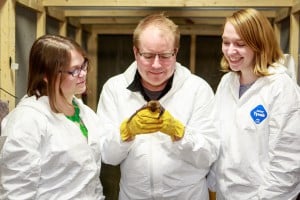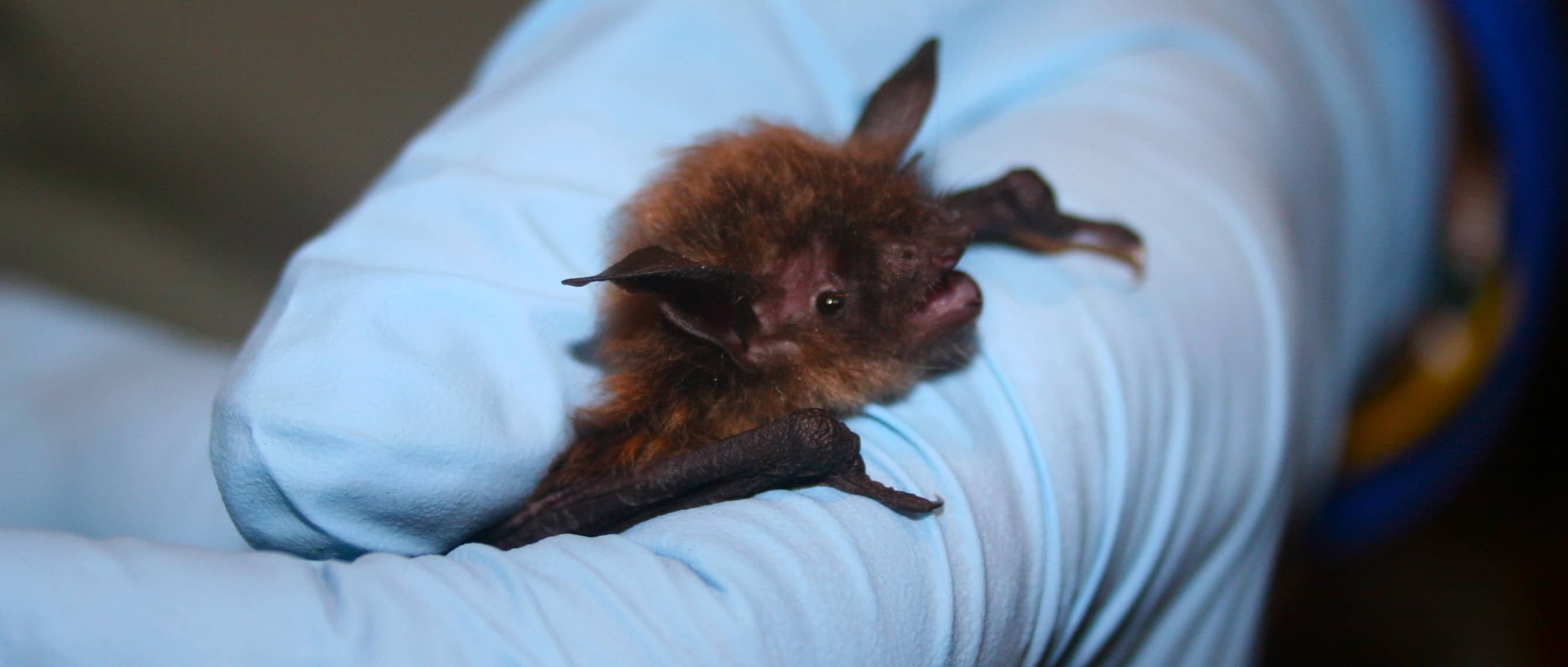Share this article
Hibernating Bats Have Immune Response to WNS
When little brown bats (Myotis lucifugus) infected with white nose syndrome are hibernating, their immune systems are still actively fighting, contrary to previous hypotheses, according to a recent study.
Researchers looked at the genes expressed in wings of bats that were affected by white nose syndrome — an infection caused by the fungus Pseudogymnoascus destructans — and compared them to wings of little brown bats hibernating under similar conditions without white nose syndrome in the study published in PLOS Pathogens. Through gene expression analysis, they found that genes activated in bats with white nose syndrome suggested a partial immune response.
“We found dramatic changes in genes being activated during white nose syndrome,” said Ken Field, an associate professor of biology at Bucknell University and lead author of the study. “This was somewhat surprising because when bats are hibernating, we expected muted or weak immune responses. In fact, what we see is a strong immune response appropriate for a fungal infection.”
However, part of the immune response was missing, according to Field — the part of the response that recruits white blood cells called neutrophils. “This is like pulling the fire alarm, but the fire department never showed up,” Field said.

Associate Professor of Biology Ken Field (center) holds a big brown bat while Bucknell University students Sophia Reeder (left) and Elizabeth Rogers (right) take a look at it. Big brown bats are also affected by white nose syndrome. Image Credit: Brett Simpson/Bucknell University
The infected bats may experience a lot of itching and possibly even pain as a result of their immune response, according to Field, which could be contributing to frequent arousals from hibernation. The frequent arousals could be one of the main causes of death for bats that are hibernating. “Going back to the fire alarm analogy, even if the fire alarm is going off, you can’t sleep even if it were a false alarm,” Field said.
Field said they don’t know yet if the bats’ immune systems are repressed because they are hibernating or because the fungus is preventing white blood cells from showing up where they belong. However, Field is leaning toward the latter. In other fungal infections that have caused massive die-offs in amphibians, research has shown that their immune systems were repressed as a result of the fungus, he said. “There’s no direct evidence of this,” Field said. “But it’s my suspicion that’s what’s going on because when [the bats] hibernate, they’re able to send white blood cell neutrophils to other types of infections.”
There are two major conservation implications to the research, according to Field. One is that it will help researchers better understand how the bats are reacting to the fungus and why it’s killing them. “We can better understand mechanisms and implement strategies with a better understanding of the pathology of the disease instead of shooting in the dark,” Field said. The study also helps researchers learn more about the fungus causing the disease. Using gene expression analysis to look at the pathogen’s genes, Field was able to see how genes were expressed in the fungus. Now, he is looking for novel pathogen targets and drug treatments to block them. “If we could slow down the fungus, the bats will be fine,” he said.
This and other research such as a recent study on a natural occurring yeast inhibiting the growth of the white nose syndrome fungus, are important, especially since a new U.S. Geological Survey study estimates that between 2016 and 2018 little brown bat populations that once were made up of millions of bats, could decline to lower than 100,000 bats.
Field continues to research the fungus and the bats in order to identify practical ways for dealing with white nose syndrome. “There’s still a lot of work that needs to be done to … take that knowledge and save bats with it.”
Header Image: A biologists holds a little brown bat. Image Credit: USFWS/ Ann Froschauer








